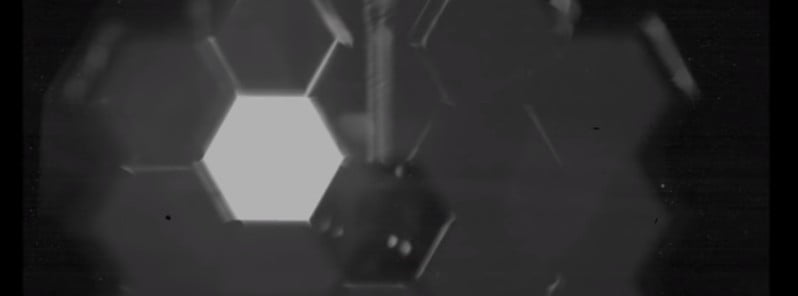James Webb telescope hit by micrometeoroid, sustains no major damage

Between May 23 and 25, 2022, NASA’s James Webb Space Telescope sustained a micrometeoroid impact to one of its primary mirror segments. While such strikes are an unavoidable aspect of operating any spacecraft, this most recent impact was larger than was modeled, and beyond what could have been tested on the ground.
Thorough analysis and measurements are ongoing, but initial assessments found the telescope is still performing at a level that exceeds all mission requirements despite a marginally detectable effect in the data, NASA’s Thaddeus Cesari noted.1
“We always knew that Webb would have to weather the space environment, which includes harsh ultraviolet light and charged particles from the Sun, cosmic rays from exotic sources in the galaxy, and occasional strikes by micrometeoroids within our solar system,” said Paul Geithner, technical deputy project manager at NASA’s Goddard Space Flight Center in Greenbelt, Maryland.
“We designed and built Webb with performance margin – optical, thermal, electrical, mechanical – to ensure it can perform its ambitious science mission even after many years in space.”
This most recent hit was not a result of a meteor shower and is currently considered an unavoidable chance event.
As a result of this impact, a specialized team of engineers has been formed to look at ways to mitigate the effects of further micrometeoroid hits of this scale.
Over time, the team will collect invaluable data and work with micrometeoroid prediction experts at NASA’s Marshall Space Flight Center to be able to better predict how performance may change.
“Since launch, we have had four smaller measurable micrometeoroid strikes that were consistent with expectations and this one more recently that is larger than our degradation predictions assumed,” Lee Feinberg, Webb optical telescope element manager at NASA Goddard, said.
“We will use this flight data to update our analysis of performance over time and also develop operational approaches to assure we maximize the imaging performance of Webb to the best extent possible for many years to come.”
Operators of the telescope are expected to release Webb’s first full-color images and spectroscopic data on July 12, 2022.
This telescope is the world’s largest, most powerful, and most complex observatory ever launched into space.
It’s been going through a six-month period of preparation before it can begin science work, calibrating its instruments to its space environment and aligning its mirrors to make it ready to begin its science mission.
References:
1 Webb: Engineered to Endure Micrometeoroid Impacts – NASA – June 8, 2022
Featured image: James Webb Space Telescope ‘Selfie’ captured on February 11, 2022. Credit: NASA


Commenting rules and guidelines
We value the thoughts and opinions of our readers and welcome healthy discussions on our website. In order to maintain a respectful and positive community, we ask that all commenters follow these rules.